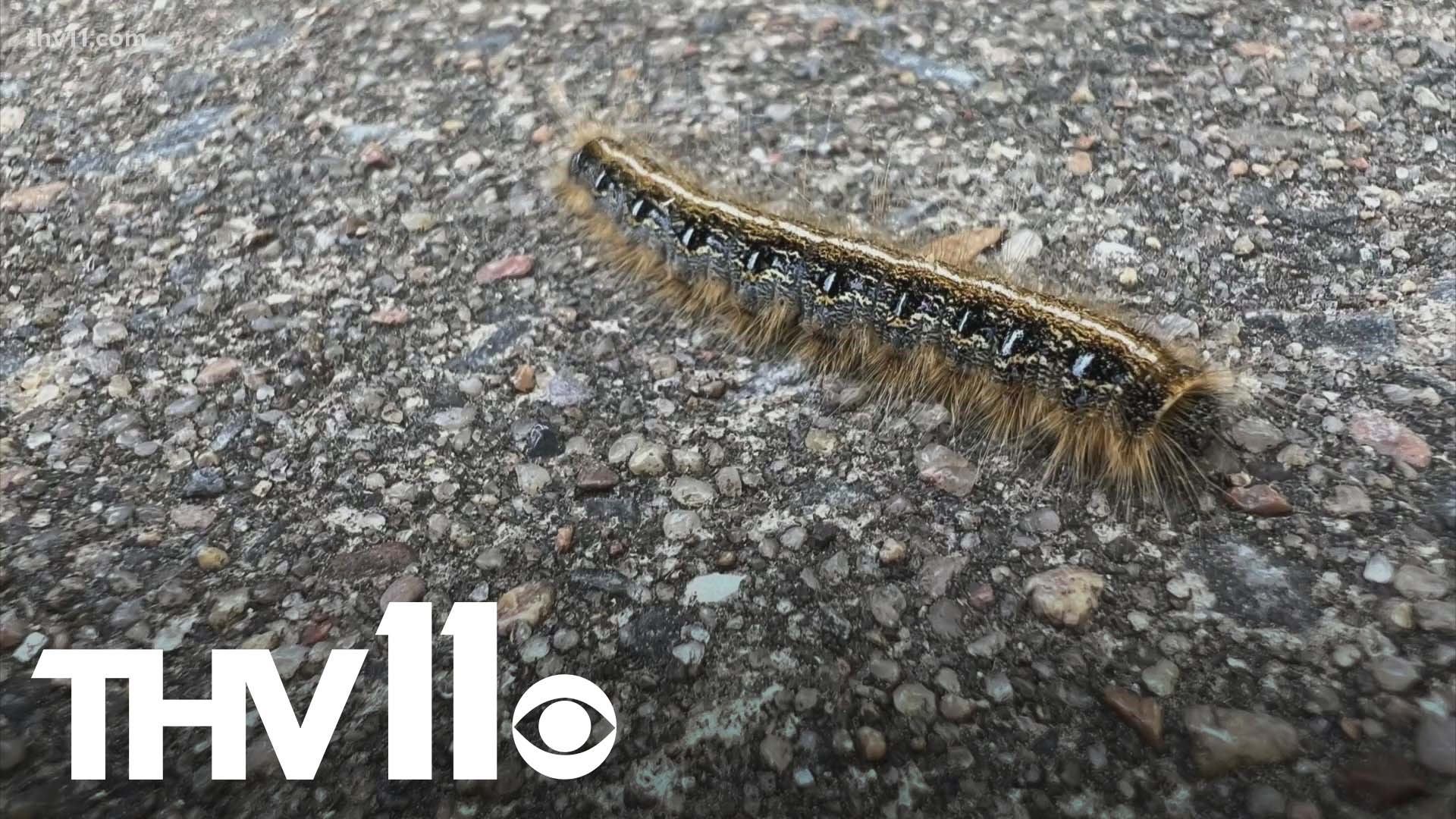LITTLE ROCK, Ark. — Spring brings nice weather, but also insects like the eastern tent caterpillar.
The insect caused quite a stir on social media last week, and one of the biggest questions asked was why they almost seem to appear out of nowhere.
Extension Entomologist for the University of Arkansas System Division of Agriculture Jon Zawislak said that although they may seem like they've appeared out of nowhere, they've actually already been out for about three or four weeks.
"Malaka Soma Americanum is their fancy scientific name," Zawislak said. "The whole lifespan, from the time they hatch out from an egg is maybe six weeks. They'll stay in the egg case all year long. They'll overwinter that way and then next year, we'll see some more.”
He added that it can feel like the eastern tent caterpillars are taking over during this time of year— from your backyard to patio, to sidewalks and trees, they truly are everywhere.
They overwinter as an egg, and when they hatch, the egg masses may contain 150 to 400 eggs.
The caterpillars cluster together and spin a big web that protects the tiny baby caterpillars. They stay covered during the day and then in the early morning and evening when it's cooler, they wander out onto the branches to feed on leaves.
Normally when people start to notice the caterpillars, they are fully grown and have already molted several times. Their mission then is to find a secluded place to spin a cocoon.
Zawislak explained that once they find a place to spin a cocoon, they will wrap themselves up and spend about three weeks in that pupal stage.
When they will emerge as an adult, they won't feed at all. Living for about five days, the adults look for mates to lay more eggs and then die off.
Although some may beg to differ, Zawislak said these little hairy creatures are actually not considered pests.
“They won't cause a lot of damage to a healthy tree, they can defoliate really small young trees, but most trees that they feed on are going to recover and they'll put out another flush of leaves," Zawislak said.
However, they can sometimes cause damage to fruit trees as they feed on apples, peaches, pears, and cherries, as well as maples and hawthorns.
Their name in Greek means 'soft body' and Zawislak says they're more in danger if children pick them up and carry them around and drop them.
Most dogs and cats stay away from them, and their big irritating hairs make them unpalatable for birds.
If you missed them this season, don’t worry, they’ll be back.
“Probably mid-March next year, people will start to panic again with this sudden appearance of all these worms," Zawislak said.
He added that they do get a few questions on how to control them, especially since their nest can be unsightly for homeowners.
He advised not to burn the nest, which can do more harm to the tree.
If you are able to reach the nest, it's best to simply prune it out or apply a product called BT, Bacillus Thuringiensis, to the foliage, which the caterpillars will eat instead.

